People
Art Dealer Chantal Crousel on the Inside Story of Paris’s Art Market, and Why She’s Now Passing the Reins to the Next Generation
We caught up with the gallerist and her son, Niklas Svennung, who now directs the gallery.
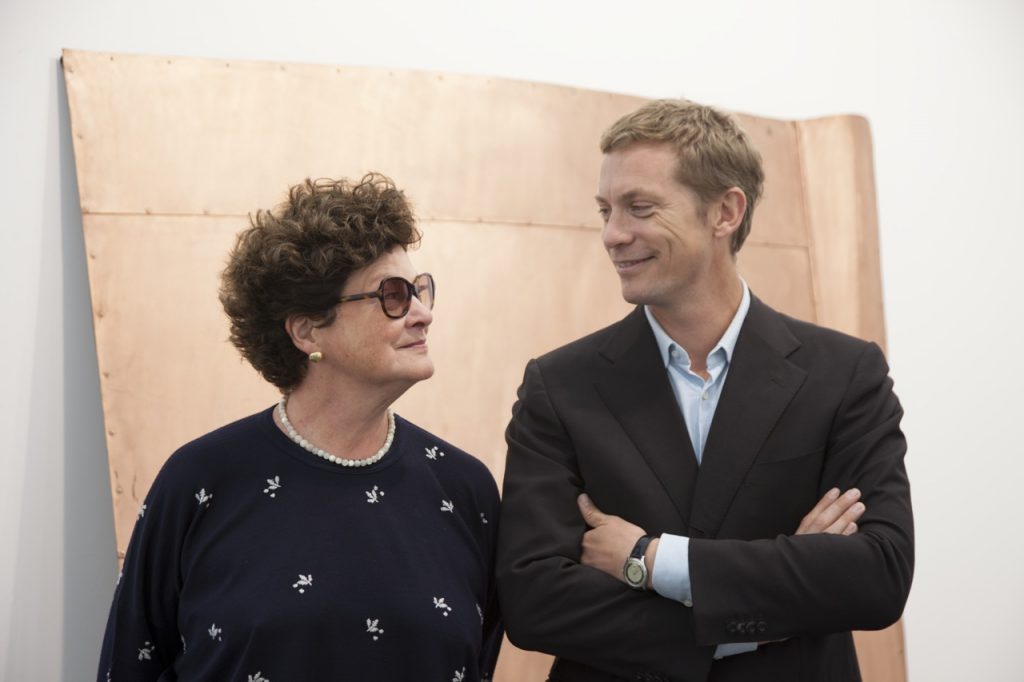
We caught up with the gallerist and her son, Niklas Svennung, who now directs the gallery.

Anna Sansom

Nothing predestined Chantal Crousel to become one of the most successful gallerists in Paris.
Born in Belgium as the daughter of a bank manager, Crousel was working in Brussels as a secretary for a forklift truck company when, one day, she spotted a drawing by Man Ray in a storefront window. This serendipitous acquisition propelled Crousel to move to Paris, study art history, and become a gallerist. She inaugurated her eponymous gallery near the Centre Pompidou in 1980, where early exhibitions on artists from Alighiero Boetti to Cindy Sherman revealed Crousel’s international outlook and intellectual curiosity.
In 2005, five years after her son Niklas Svennung joined the gallery, Crousel relocated to the Marais, which is the city’s main gallery district today. The gallery continues to represent a broad stable of artists, including Gabriel Orozco, Mona Hatoum, Glenn Ligon, Haegue Yang, Jean-Luc Moulène, and Mimosa Echard.
Crousel and Svennung talk to Artnet News about Paris’s growing place in the art market amid an influx of foreign galleries and collectors, how the pandemic is impacting creativity, and the financial struggles facing young artists in the French capital today.
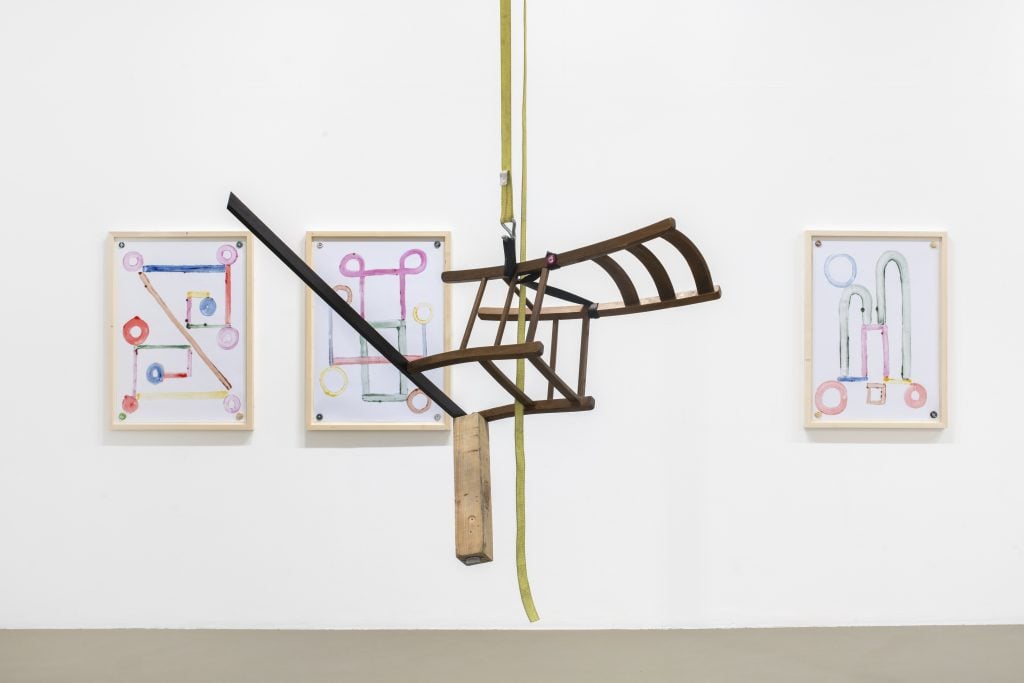
Installation view Abraham Cruzvillegas, “La Señora de Las Nueces” Galerie Chantal Crousel, Paris, France (23/01 — 27/02/2021). Courtesy of the artist and Galerie Chantal Crousel, Paris. Photo: Martin Argyroglo.
What was your ambition when you opened your gallery in 1980?
Chantal Crousel: When I founded my gallery nearly eight years after arriving in Paris, I thought about what I could add to the Parisian scene. I was keen to introduce artists that weren’t well known in Paris but which French museums knew about. I showed Tony Cragg who was already quite successful, but not in France. Although several of my early exhibitions were innovative and different from what was being presented in Paris, it was difficult to sell to collectors who were wary about artists that they didn’t know.
When did Paris start becoming more relevant as an art city again, after having been eclipsed by New York a few decades earlier?
Niklas Svennung: Paris began evolving and gaining more international visibility in the 2000s after the [international contemporary art fair] Fiac returned to the Grand Palais [in 2006] under the directorship of Martin Béthenod and Jennifer Flay. The art market started developing considerably and Paris could benefit from its incredible heritage. The founding of Frieze in London [in 2003] also created positive competition.
CC: Paris began to stop its navel-gazing and to radically transform. More galleries like us opened in the Marais, where we relocated in 2005 in order to have a larger space.
The art market is a network—as soon as foreign collectors know about the fairs and exhibitions, it gives them a reason to come to Paris, which is already attractive because of the Louvre, the Centre Pompidou and hundreds of other places. Now there are more museum directors and collectors from abroad based here, and initiatives all being created by young curators and artists.
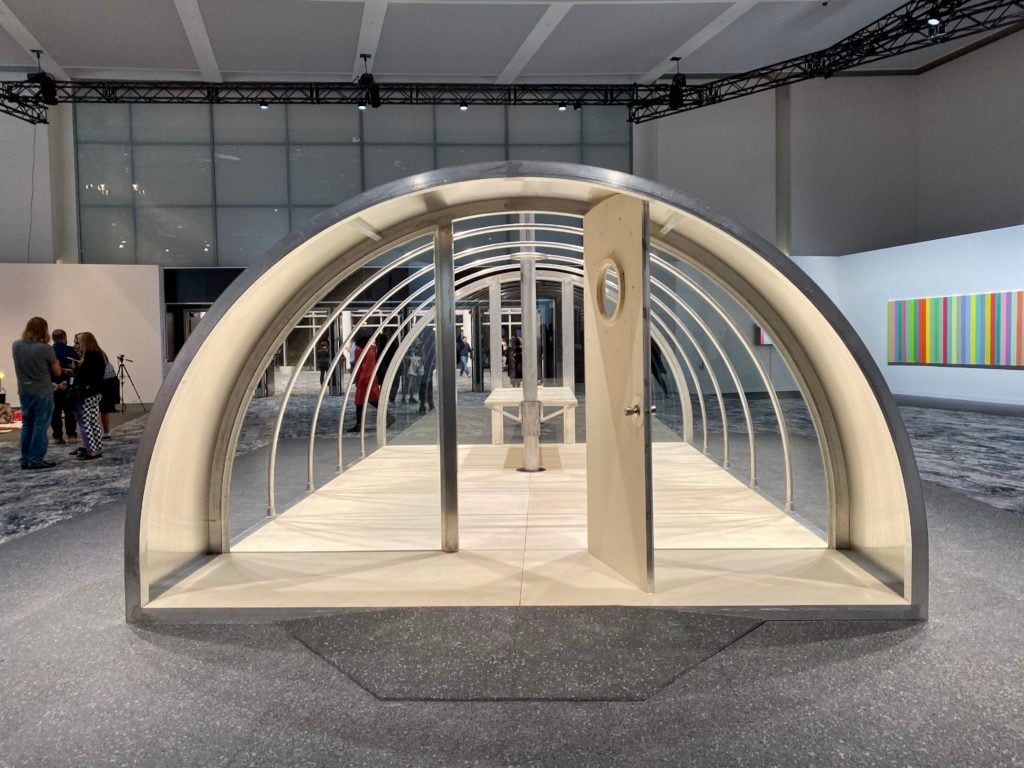
Oscar Tuazon, Quonst Tent (2016), from Chantal Crousel, Paris, at Art Basel Miami Beach Meridians. Photo by Sarah Cascone.
Is the Paris market powered more by local or foreign collectors?
NS: We sell around 70 percent of our artworks to foreign collectors, either at fairs abroad or by email. Over the last 15 years, Paris has become a platform for exchanges again. The arrival of new international galleries has contributed to consolidating this leading position; this is something that needs to endure so that Paris can further strengthen its identity.
Although the Paris market is stronger now, how interesting is the city for artists?
CC: There’s a growing number of inspired young artists creating small associations in spaces to show their work with the support of collectors and institutions who want to see them emerge and succeed internationally. The problem is that property and rent are quite high for young artists.
NS: Paris remains a city that artists stay in temporarily, because it’s harder than Berlin or Brussels. What’s missing is artists who stay here permanently.
Niklas, before joining your mother’s gallery, you worked for four years for David Zwirner in New York. Later, in 2017, you spent a year in Los Angeles. What did you learn from these experiences?
NS: I learnt a certain pragmatism and that the passion of American collectors is quite different from that of Europeans. American collectors take more risks, are freer in how they develop their collections and more likely to invest in new art forms. Consequently, the American art scene develops faster than in Europe. But young French collectors are also adopting this mindset and are eager to buy works by young artists before they become unaffordable.
How do you choose your artists?
CC: It starts with an encounter when they’re young, usually through a meeting with mutual friends, curators, or museum directors. When I meet an artist expressing a new vision, viewpoint or perspective, like Gabriel Orozco or Anri Sala, there’s a click or fascination that makes me want to dig deeper to get to know them better.
We don’t want the gallery to be the reflection of a geographical, generational, or aesthetic movement. In a way, the program is a reflection of our multiple, complex, complementary personalities.
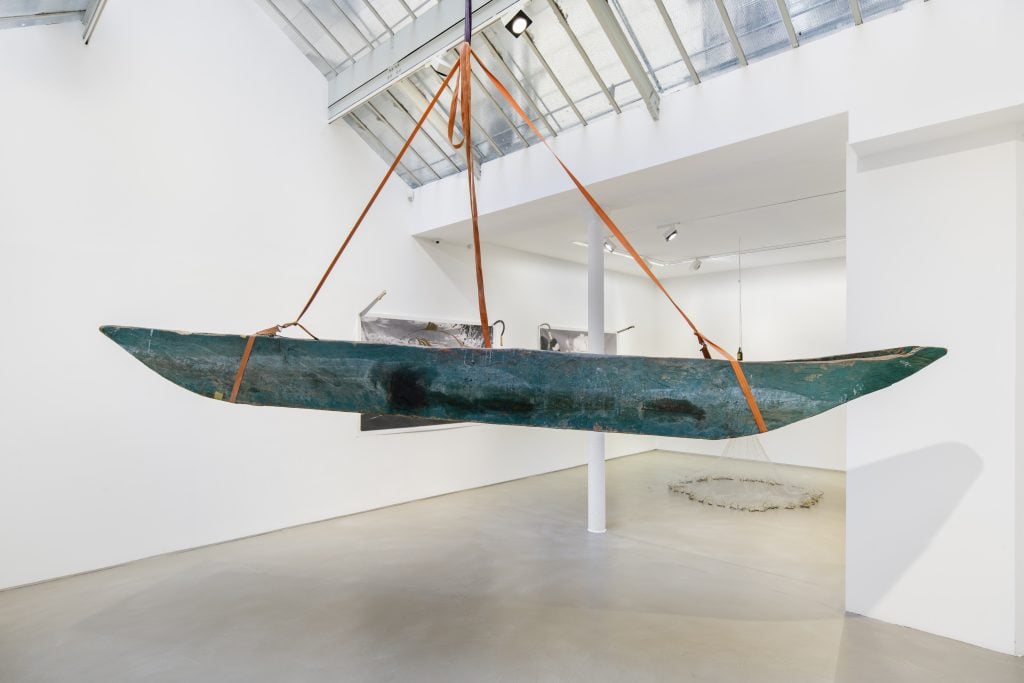
Installation view, “Rhé,” Galerie Chantal Crousel, Paris, France (23/01 — 27/02/2021). Courtesy of the artists and Galerie Chantal Crousel, Paris. Photo: Martin Argyroglo.
How do you think the pandemic is affecting artists’ creativity?
NS: The generally slower pace of production and greater amount of tranquility means artists have the capacity for new, more specific subjects of research. It’s a bit too early to see what impact this will have, but this is certainly a period where artists can seek more depth and turning points in their practices, even though the postponements of exhibitions are difficult psychologically, especially for the younger artists. I think the quantity of output will be reduced but that there’ll be greater attention to quality.
CC: For artists who put all their energy and inspiration into producing a museum exhibition that has been postponed by a year, there’s a period of suspense and waiting. Meanwhile, they have to live with the work wrapped up in their studio. It can require a lot of courage and strength to start working on something else immediately.
The pandemic is also adversely affecting artists who need collaborators to give form to their videos and film works. I was talking the other day with Anri Sala who is making a new film, and his film editor and producers are often absent or apart. So the work isn’t progressing and is taking longer.
Chantal, why did you decide two years ago to pass the reins of the gallery over to Niklas and take on a consulting role?
CC: Niklas is old enough, mature enough, and capable enough to take the reins of the gallery. I’m very pleased to be by his side, give my opinion, and propose new projects. When he came to join me in 2000, we said we’d try for six months! I thought it’d be nice to have this continuity but it wasn’t imposed. Today, twenty years later, we are partners and co-owners of the gallery.
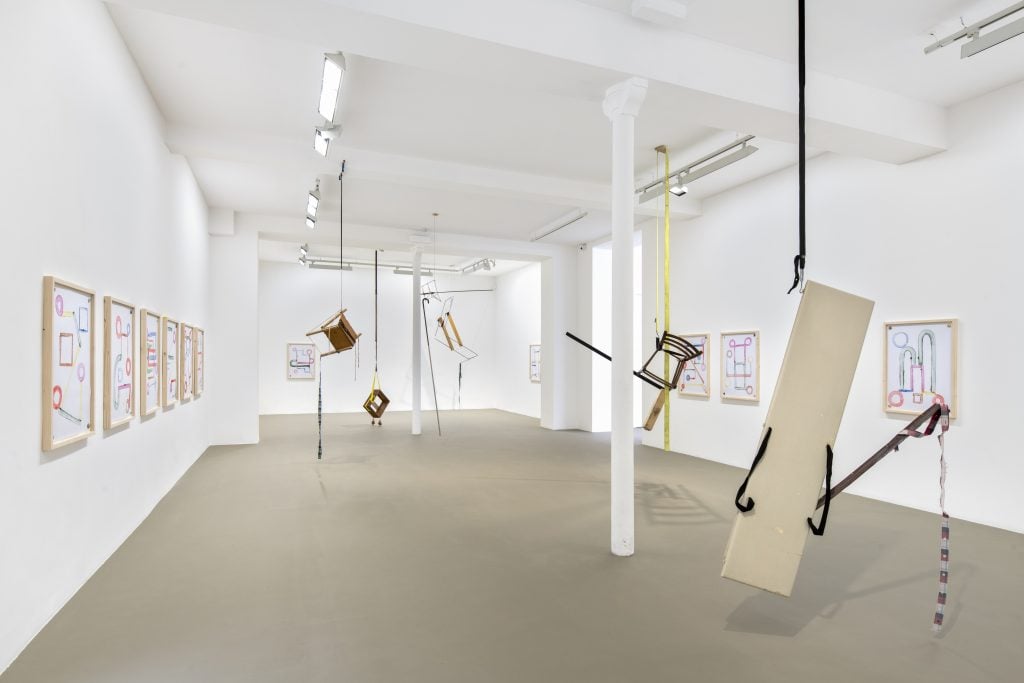
Installation view Abraham Cruzvillegas, “La Señora de Las Nueces” Galerie Chantal Crousel, Paris, France (23/01 — 27/02/2021). Courtesy of the artist and Galerie Chantal Crousel, Paris. Photo: Martin Argyroglo.
What are your future plans? Are you still looking for a larger space in Paris, and are you considering opening a space in China?
NS: We’re still looking for a larger space in the Marais but haven’t seen anything that appeals enough yet. We have a Chinese associate who has been representing the gallery in Beijing since 2015, and perhaps one day we’ll open a space there. I’m excited that [French artist] Dominique Gonzalez-Forster is joining the gallery this year with an exhibition in September. She’s never had a gallery in Paris before but has very good relationships with galleries abroad.
CC: As for me, I’m curating projects for our artists outside the gallery. Several of them are suspended because of the pandemic, like a Wang Bing retrospective at the Cinemathèque of Tangiers in Morocco, and Tarek Atoui’s forthcoming exhibition at the CAAC in Seville.
Chantal, have you considered opening a space for your collection?
CC: No. I’m very fond of my collection but I think it’s up to my children and grandchildren to decide what to do with it. I don’t want to create a monument.
“Jure-moi de Jouer (Swear That You’ll Play)”, a book on the four decades of Galerie Chantal Crousel is now available for pre-order from publisher Is-Land Edition.